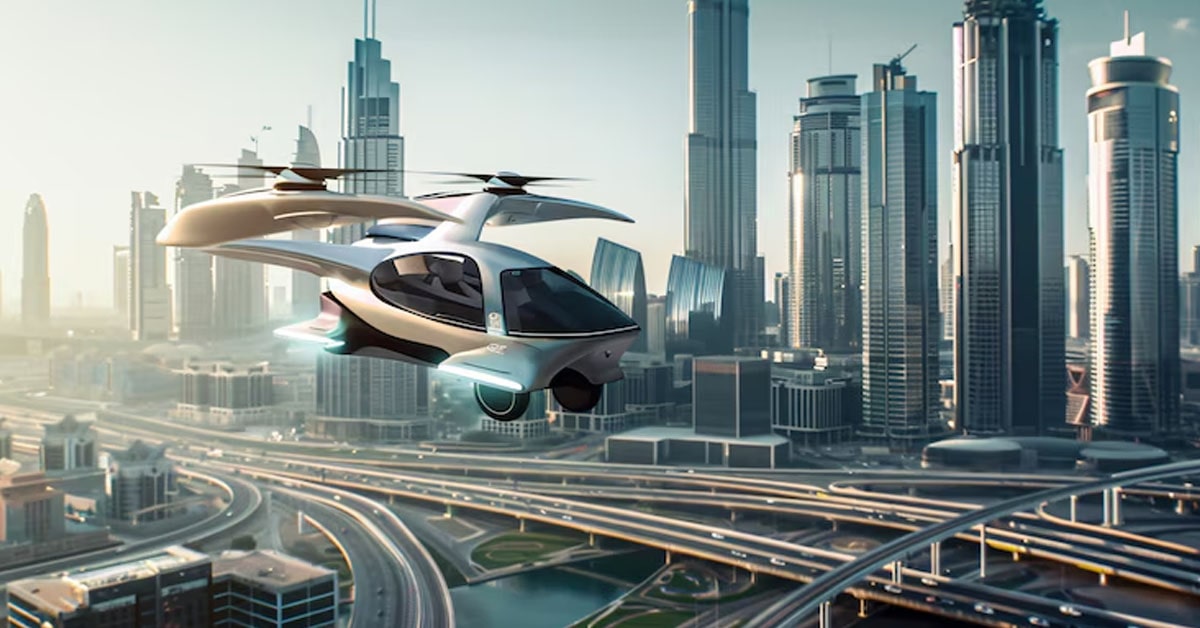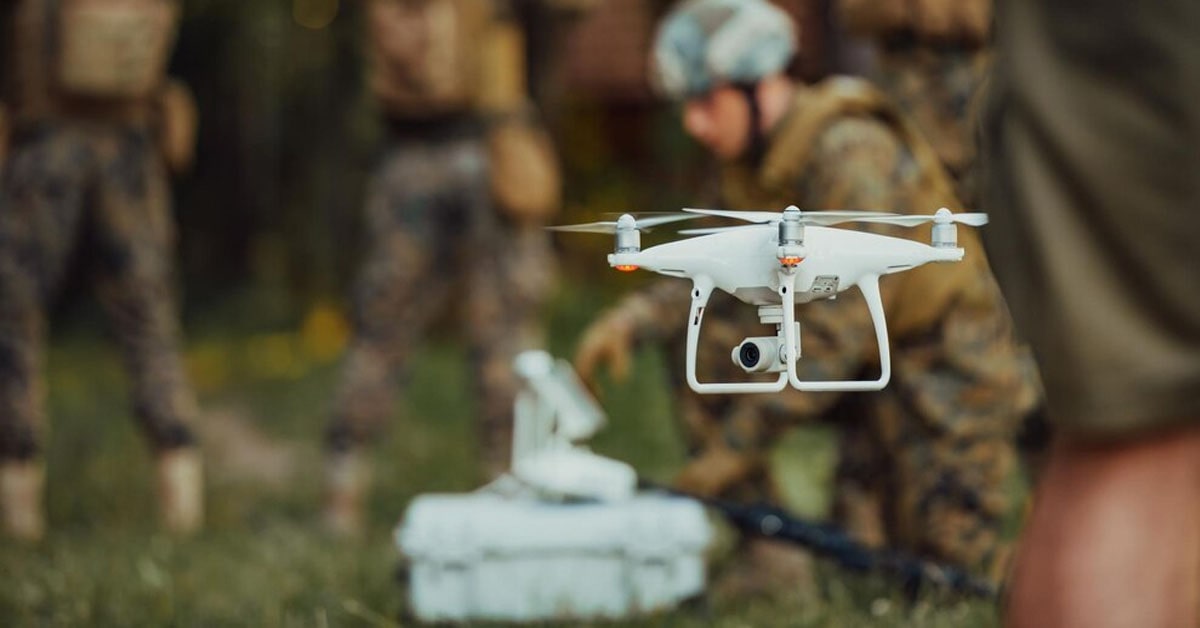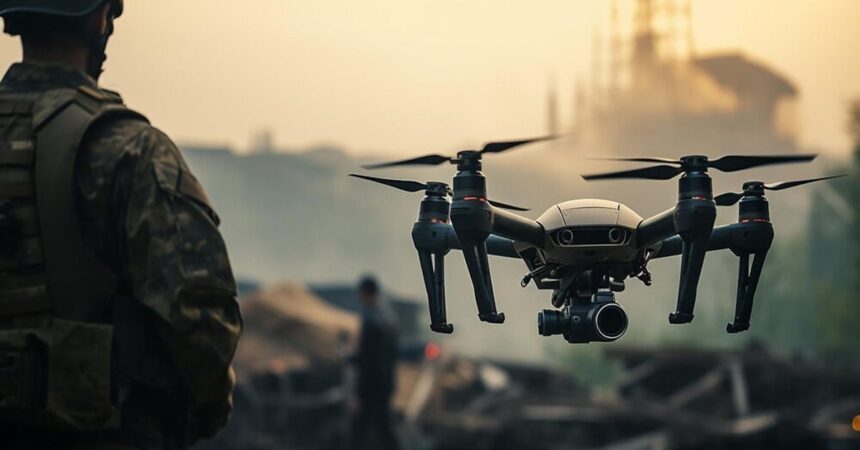Drone Market Analysis: Key Insights and Forecast to 2030
- Market Size: The global drone market is likely to reach around $60 billion by 2030, though some estimates suggest up to $260 billion, depending on the scope of segments included.
- Drone Types: Common types include fixed-wing, rotary-wing, and hybrid drones, each suited for specific tasks like surveying or delivery.
- Battery Types: Lithium-Polymer (LiPo) batteries dominate, with other types like Nickel-Cadmium (NiCad) and Nickel-Metal Hydride (NiMH) less common.
- Battery Capacity: Ranges from below 3000 mAh for small drones to over 10000 mAh for industrial models.
- End Users: Key sectors include agriculture, construction, energy, logistics, military, and media.
- Trends: Growth is driven by better technology, wider industry use, and evolving regulations, with Asia-Pacific leading and the Middle East & Africa growing fastest.
- Uncertainty: The “$2.5 billion” figure may refer to a specific segment or year, as it doesn’t match current global market estimates.
Understanding the Drone Market
The drone market includes unmanned aerial vehicles (UAVs) used for various purposes, from hobbyist photography to industrial inspections. Research suggests the market is growing rapidly due to advancements in drone technology, like improved batteries and AI, and increasing demand across industries. The “$2.5 billion” figure might relate to a specific part of the market, such as drone batteries or a regional segment, but most reports point to a much larger global market.

Drone Types and Their Uses
Drones come in different designs:
- Fixed-Wing: Best for long flights, often used in mapping or military tasks.
- Rotary-Wing: Flexible and popular for short-range tasks like filming or inspections.
- Hybrid: Combines both for specialized needs, like long-range delivery.
These types cater to different needs, with rotary-wing drones being the most common due to their versatility.
Battery Types and Capacities
Drones rely on batteries, with LiPo batteries being the most popular because they’re lightweight and powerful. Other types, like NiCad and NiMH, are less common. Battery capacities vary:
- Small drones use batteries under 3000 mAh.
- Medium drones use 3000-5000 mAh.
- Larger drones, for tasks like delivery, use 5000-10000 mAh or more.
Bigger batteries mean longer flights but add weight, so technology is improving to balance this.
Who Uses Drones?
Drones serve many industries:
- Agriculture: Checking crops or spraying fields.
- Construction: Mapping sites or inspecting buildings.
- Energy: Checking power lines or wind turbines.
- Logistics: Delivering packages, especially in cities.
- Military: Surveillance or combat tasks.
- Media: Filming movies or events.
The energy sector uses drones heavily, but logistics is growing fast due to companies like Amazon exploring drone delivery.
What’s Next for Drones?
By 2030, the drone market could be worth $60 billion or more, driven by:
- Tech Improvements: Better batteries, AI, and 5G for real-time control.
- More Uses: From disaster response to environmental monitoring.
- Regulations: Rules are getting clearer, allowing more drone use but with safety limits.
- Regional Growth: Asia, especially China, leads, while Africa and the Middle East are catching up.
The exact market size varies by report, so the true figure depends on what’s included, like services or hardware.
Drone Market Analysis: Trends, Segmentation, and Forecast to 2030
The global drone market, encompassing unmanned aerial vehicles (UAVs) and their associated services, is experiencing robust growth driven by technological advancements, expanding applications, and evolving regulatory frameworks. While the query references a “$2.5 billion drone market,” this figure does not align with current global market estimates, which are significantly larger. It may refer to a specific segment, such as the drone battery market in a particular region or an earlier year’s valuation. This analysis provides a detailed examination of the drone market, focusing on drone types, battery types, battery capacities, end users, global trends, and forecasts up to 2030, drawing from authoritative sources.
Market Size and Forecast
Research suggests the global drone market is poised for significant expansion. According to Drone Industry Insights, the market is forecasted to reach US$60 billion by 2030, with the commercial segment growing at a 7.9% compound annual growth rate (CAGR) from 2025 to 2030. In contrast, Spherical Insights projects a more ambitious growth trajectory, estimating the market to grow from USD 28.5 billion in 2021 to USD 260 billion by 2030, at a 27% CAGR from 2022 to 2030. Another source, Grand View Research, estimates the market at USD 73.06 billion in 2024, growing at a 14.3% CAGR from 2025 to 2030. These discrepancies likely stem from differing definitions of the market, such as the inclusion of recreational drones, services, or emerging technologies.
The “$2.5 billion” figure may pertain to a specific segment or an earlier market size. For instance, the U.S. drone battery market was approximately USD 2 billion in 2022. For this analysis, we adopt the Drone Industry Insights figure of $60 billion by 2030 as a baseline, given its focus on a comprehensive drone market report.
Market Segmentation
The drone market is segmented by drone type, battery type, battery capacity, end user, and region, each offering insights into market dynamics.
Segmentation by Drone Type
Drones are categorized based on their design and functionality, which determine their suitability for specific applications:
- Fixed-Wing Drones: Designed for long-endurance flights, these are ideal for large-scale surveying, mapping, and military reconnaissance. They offer extended range but require runways or launch systems.
- Rotary-Wing Drones: Known for their maneuverability, these drones are widely used for short-range tasks such as aerial photography, inspections, and delivery. They can hover and operate in confined spaces.
- Hybrid Drones: Combining features of fixed-wing and rotary-wing designs, hybrids are emerging for applications requiring both endurance and flexibility, such as long-range delivery.
Insights: Spherical Insights notes that rotary-wing drones are expected to grow at a significant CAGR due to their versatility across commercial applications. Fixed-wing drones maintain a strong presence in military and large-scale surveying tasks.
Segmentation by Battery Type
Battery type refers to the chemical composition powering drones, a critical factor in performance:
- Lithium-Polymer (LiPo): Dominates the market with a 74.5% share in 2022, favored for its high energy density and lightweight properties.
- Nickel-Cadmium (NiCad): An older technology, less common due to environmental concerns and lower efficiency.
- Nickel-Metal Hydride (NiMH): Used in niche applications but overshadowed by LiPo’s superior performance.
Insights: LiPo batteries are the standard for most drones, from consumer to industrial models. Emerging technologies, such as solid-state batteries, are under development but not yet mainstream.
Segmentation by Battery Capacity
Battery capacity, measured in milliampere-hours (mAh), determines flight duration and payload capacity:
- Below 3000 mAh: Used in small, lightweight drones for short recreational or light commercial flights.
- 3000-5000 mAh: Common in mid-range drones for hobbies and professional tasks like photography.
- 5000-10000 mAh: Found in professional drones for extended flights or moderate payloads.
- Above 10000 mAh: Reserved for heavy-duty industrial or military drones requiring long endurance or heavy payloads.
Insights: Demand for higher-capacity batteries is growing as drones take on more demanding tasks like delivery and long-range surveillance. Advances in battery technology are reducing weight while increasing capacity.
Segmentation by End User
End users represent the industries leveraging drones for various applications:
- Agriculture: Drones monitor crops, spray fertilizers, and enhance precision farming, reducing costs and improving yields.
- Construction: Used for site surveying, mapping, and safety inspections, offering real-time data and reducing risks.
- Energy: Drones inspect power lines, wind turbines, and solar farms, minimizing downtime and enhancing safety.
- Logistics: Emerging for package delivery, particularly in urban areas, with companies like Amazon leading trials.
- Military: Employed for surveillance, reconnaissance, and combat, with significant investment in autonomous systems.
- Media and Entertainment: Popular for aerial photography and filmmaking, providing unique perspectives.
- Public Safety: Supports search and rescue, disaster response, and law enforcement operations.
Insights: Drone Industry Insights identifies the Energy sector as the top user of drone applications, while Cargo, Courier Services, Intralogistics, and Warehousing exhibit the highest CAGR. Spherical Insights highlights Construction as holding a 37% market share, followed by Agriculture and Aerial Surveying.
Regional Segmentation
The drone market varies by region, influenced by economic, regulatory, and technological factors:
- North America: Commands a significant share, approximately 38%, driven by U.S. military demand (over 60% in 2020) and commercial adoption.
- Europe: Strong in commercial and industrial applications, with robust regulatory frameworks supporting safe drone use.
- Asia-Pacific: Leads the market, with China and Japan as key players, and is the fastest-growing region due to government initiatives and industrial demand.
- Middle East & Africa (MEA): Emerging as the fastest-growing region, fueled by infrastructure development and security applications.
- South America: Growing steadily, particularly in agriculture and mining sectors.
Insights: Drone Industry Insights emphasizes Asia’s dominance, led by China and Japan, while MEA’s rapid growth is driven by emerging use cases.

Drone Battery Market Analysis
Given the user’s emphasis on battery-related segmentations, the drone battery market warrants specific attention:
- Market Size: Valued at US$6.3 billion in 2022, the global drone battery market is projected to reach US$14.1 billion by 2032, with an 8.3% CAGR.
- Historical Growth: From 2017 to 2021, the market grew at a 5.6% CAGR.
- Regional Shares in 2022:
- North America: ~35.5% (USD 2.2 billion)
- Europe: ~27.9% (USD 1.8 billion)
- China: ~11.6% (USD 732 million)
- Key Segments:
- By Battery Chemistry: LiPo holds a 74.5% share, valued at USD 4.7 billion in 2022.
- By Battery Capacity: Higher capacities (above 5000 mAh) are gaining traction for industrial applications.
- By Drone Type: Mini Quad, Micro Quad, Commercial/Industrial, Others.
- Regional Highlights:
- The U.S. market was USD 2 billion in 2022, expected to reach USD 4.9 billion by 2032.
- Europe’s drone lithium battery market was USD 1.14881 billion in 2022, projected to reach USD 3.63029 billion by 2030.
- Asia-Pacific’s market was USD 0.92165 billion in 2022, forecasted to reach USD 3.03578 billion by 2030.
Note on $2.5 Billion: The combined Europe and Asia-Pacific drone lithium battery markets in 2022 totaled approximately USD 2.07 billion, close to the queried figure. The U.S. drone battery market at USD 2 billion in 2022 is also proximate, suggesting the “$2.5 billion” may refer to a regional or segment-specific valuation.
Global Trends Driving the Drone Market
Several trends are shaping the drone market’s trajectory:
- Technological Advancements: Improvements in battery efficiency, AI-powered autonomous systems, and enhanced sensors (e.g., thermal, hyperspectral) are expanding drone capabilities. Integration with 5G enables real-time data transmission and remote operations.
- Expanding Applications: Drones are increasingly used for environmental monitoring, disaster management, and urban air mobility, beyond traditional roles in photography and surveillance.
- Regulatory Evolution: Governments are developing clearer regulations to balance safety and innovation. For example, India’s production-linked incentive scheme aims to make it a global drone hub by 2030.
- Environmental Impact: Drones reduce carbon footprints in logistics and agriculture by minimizing the need for heavy machinery or manned flights.
- Industry-Specific Growth: Logistics and delivery services are seeing rapid adoption, with companies like Amazon and UPS investing heavily in drone technology.
Forecast to 2030
The drone market is expected to grow significantly by 2030:
- Global Drone Market: Likely to reach US$60 billion by 2030, with potential estimates as high as USD 260 billion depending on the source.
- Drone Battery Market: Projected to reach US$14.1 billion by 2032, supporting the broader drone ecosystem.
- Key Growth Areas:
- Commercial Drones: Expected to dominate, with applications in logistics and construction leading growth.
- Autonomous Drones: AI and hybrid designs will drive innovation.
- Regional Dynamics: Asia-Pacific will maintain leadership, while MEA and South America emerge as high-growth regions.
Challenges and Opportunities
- Challenges:
- Regulations: Strict airspace rules in many countries limit drone applications.
- Privacy and Security: Concerns over data collection and drone misuse require robust solutions.
- Technical Barriers: Developing drones with longer flight times and heavier payloads remains a challenge.
- Opportunities:
- Government Support: Initiatives like India’s drone manufacturing incentives signal strong growth potential.
- New Applications: Urban air mobility, drone swarms, and 5G-enabled services are emerging frontiers.
- Sustainability: Drones offer eco-friendly alternatives for logistics and agriculture.
Drone Market Report Summary
Market Overview
- Global Drone Market Size: Forecasted to reach US$60 billion by 2030 (Drone Industry Insights).
- Alternative Estimate: Up to USD 260 billion by 2030 from USD 60 billion in 2021, CAGR 27% (Spherical Insights).
- Growth Drivers: Technological advancements, regulatory support, and expanding applications.
Segmentation
By Drone Type
- Fixed-Wing: Long-endurance, used in surveying and military.
- Rotary-Wing: Versatile, used in photography and inspections.
- Hybrid: Combines features for specialized tasks.
By Battery Type
- Lithium-Polymer (LiPo): 74.5% market share in 2022 (Fact.MR).
- Nickel-Cadmium (NiCad): Less common, older technology.
- Nickel-Metal Hydride (NiMH): Limited use.
By Battery Capacity
- Below 3000 mAh: Small drones.
- 3000-5000 mAh: Mid-range drones.
- 5000-10000 mAh: Professional drones.
- Above 10000 mAh: Industrial drones.
By End User
- Agriculture: Crop monitoring, spraying.
- Construction: Site mapping, inspections.
- Energy: Infrastructure monitoring.
- Logistics: Delivery services.
- Military: Surveillance, combat.
- Media & Entertainment: Aerial filming.
Key Trends
- Technology: AI, 5G, and better batteries.
- Regulations: Evolving to support safe drone use.
- Regions: Asia-Pacific leads, MEA grows fastest.
Forecast to 2030
- Market Size: Likely $57.8 billion, possibly higher.
- Battery Market: To reach $14.1 billion by 2032 (Fact.MR).
Summary Table: Drone Market Segmentation and Forecast
| Category | Details |
|---|---|
| Market Size (2021) | USD 28.5 billion |
| Forecast (2030) | US$60 billion (DII) to USD 260 billion (Spherical Insights) |
| CAGR | 7.9% (DII, 2025-2030) to 27% (Spherical Insights, 2022-2030) |
| Drone Types | Fixed-Wing, Rotary-Wing, Hybrid |
| Battery Types | LiPo (74.5% share), NiCad, NiMH |
| Battery Capacity | Below 3000 mAh, 3000-5000 mAh, 5000-10000 mAh, Above 10000 mAh |
| End Users | Agriculture, Construction, Energy, Logistics, Military, Media, Public Safety |
| Top Regions | Asia-Pacific (China, Japan), North America, MEA (fastest-growing) |
| Battery Market (2022) | US$6.3 billion, to reach US$14.1 billion by 2032 |
The global drone market is on a steep growth trajectory, driven by technological innovation, diverse applications, and supportive regulations. While the “$2.5 billion” figure likely refers to a specific segment, such as the U.S. or regional battery markets, the broader market is significantly larger, with projections ranging from $57.8 billion to $260 billion by 2030. Key segments include fixed-wing and rotary-wing drones, LiPo batteries, and industries like energy and logistics. As drones become integral to modern industries, their impact on efficiency, sustainability, and innovation will continue to grow.












